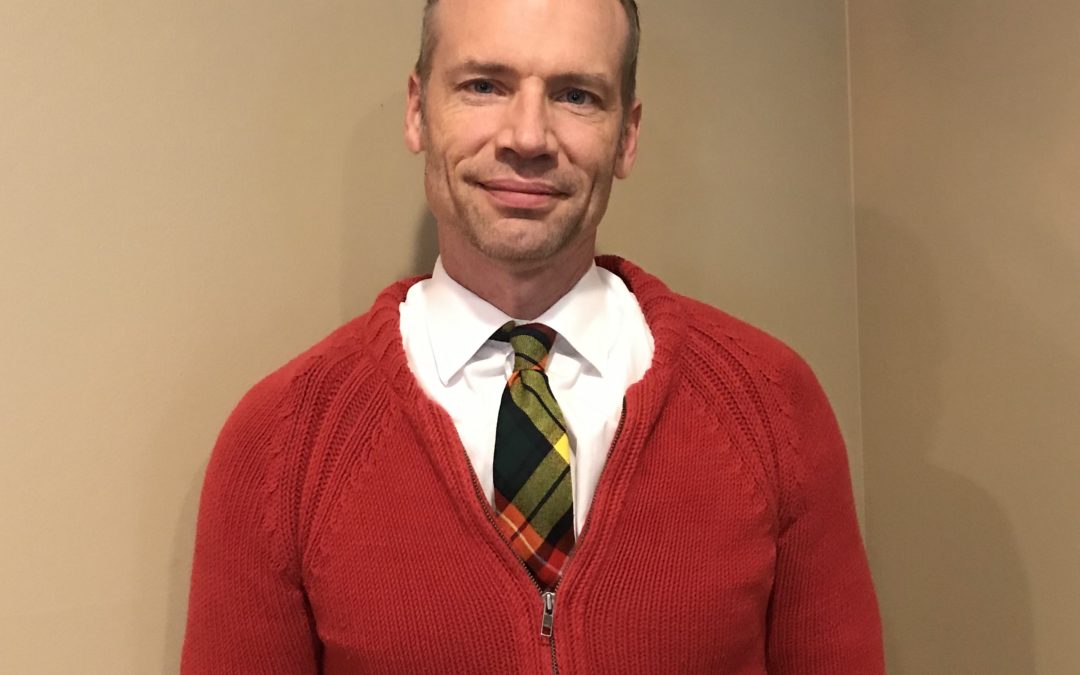As some of you know, in addition to my work at Urban Village Church, I’m currently pastoring River Forest United Methodist Church as we explore the potential of a partnership between the two congregations. A Montessori school uses River Forest’s building throughout the week and has teamed up with the church over the years to do activities together, including a Trunk or Treat event last Halloween. I wanted to be present to meet some of the Montessori parents so, of course, I had to dress up. With some brainstorming help from my wife and son, dressing up as Mister Rogers seemed easy and timely. He’s in the news again, of course, with a documentary that came out last year and a new feature film that came out a couple weeks ago.
I bought a zip-up cardigan at a second-hand store. I already had the shoes and tie so it didn’t take much to transform myself. As I walked among the parents and children at the Trunk or Treat event, though, I wondered, Do I look that much different that what I normally might wear? I was talking with one Montessori dad and he looked me over and asked, “So who are you supposed to be?” I said, “Take a guess.” He looked me over and said, “Uh, a Midwest pastor?” I was a bit chagrined since that’s already what I am, but then he said, “Oh, Mister Rogers!” Sometimes it takes a while to really get into character.
One of my Three Up recommendations below is an article I read in The Atlantic magazine by Tom Junod, whose article about Mister Rogers in the November 1998 issue of Esquire magazine inspired the movie that just came out. The Atlantic article was touching and beautiful. One of the takeaways for me was Junod’s observation that too often we see Mr. Rogers like we see a Hallmark Christmas move: warm, comfy, safe. “Demanding” and “hard” are not adjectives we usually employ when talking about our favorite neighbor, but perhaps we should.
“It isn’t that (Rogers) is revered but not followed so much as he is revered because he is not followed—because remembering him as a nice man is easier than thinking of him as a demanding one,” Junod writes. “He spoke most clearly through his example, but our culture consoles itself with the simple fact that he once existed. There is no use asking further questions of him, only of ourselves. We know what Mister Rogers would do, but even now we don’t know what to do with the lessons of Mister Rogers.” Later in the article, Junod notes that Mr. Rogers “was a good man who worked very hard at goodness.”
It doesn’t take much to insert “Jesus” instead of “Mister Rogers” in these sentences and it would be even more true. There is a temptation to put heroic figures on pedestals because then we put these figures out of reach and out of touch. If we’re honest with ourselves, that means we don’t have to be challenged by them, let alone try to follow their example. Instead, we run to them when we need to know everything is going to be OK and then put them back on their pedestal without changing our behaviors.
Goodness entails hard work. It does not come easily. It is demanding. But it is possible. I wish it were as easy as putting on a cardigan sweater or slipping on a cross necklace, but it takes a daily commitment. May we take our heroes off their pedestals and learn from them, be inspired by them, and actually follow their examples.

